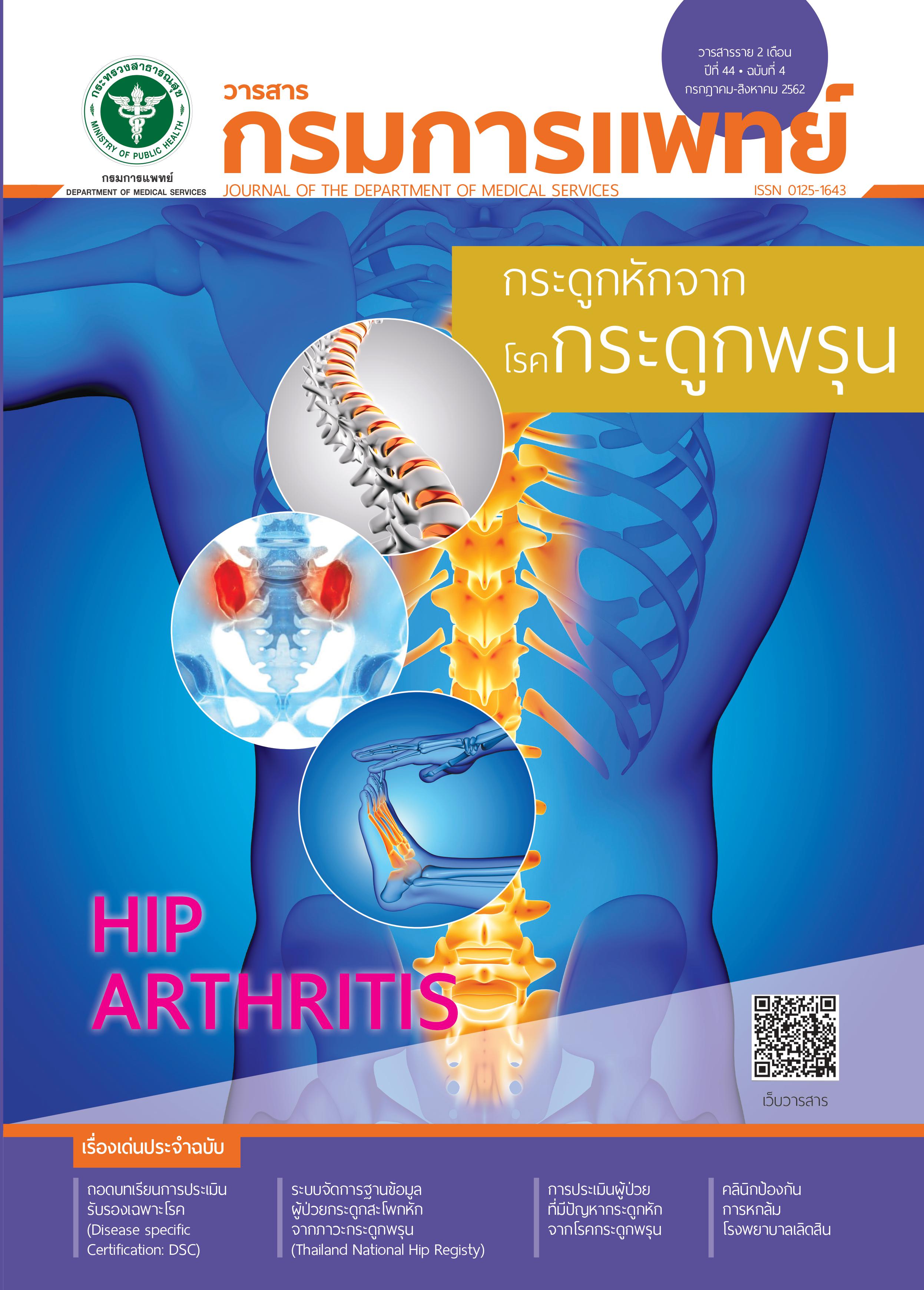Bloodstream Infection (BSI) Surveillance in Critical Care Units at Nopparatrajathanee Hospital, 2017
Keywords:
2017 CDC definitions, BSI rates, Nopparatrajathanee Hospital, Critically ill patientsAbstract
Healthcare-associated bloodstream infections (HA-BSI) related to mortality and morbidity are often caused by bacteria and classified as primary or secondary infections. However, this current definition BSI did not include the report of secondary BSI to the surveillance system. The identification of a new infection was not clear when new organisms were reported. United States Centers for Disease Control and Prevention (US-CDC) assisted Department of Medical Services to develop the definition of BSI used from 2013 to 2017. The new definition clarified the timing of HA-BSIs with simplifying measurements from hourly to calendar day units and included report of the secondary BSI. The BSI in the ICU units was audited by infection control nurses. The researchers used an electronic data collection form for retrospective chart review. Charts were selected based on a hospitalized list of ICU patients with a positive blood culture during January to December 2017. Data were reviewed to determine if the blood cultures met the 2017 BSI definitions. The results of those were compared with the data collected by the current definition. A total of 174 ICU patients with a positive blood cultures were reviewed and 60 episodes (34.4%) met this HA-BSI following the 2017 BSI definitions. BSI was classified as HA-BSI in 95% and present on admission (POA) in 5%. The totalHA-BSI rate was 2.4 per 1,000 patient-days, the primary BSI rate was 1.4 per 1,000 patient- days and CLABSI rate was 2.6 per 1,000 central-line days. The secondary BSI rate was 1.0 per 1,000 patient-days. By current definition, the total BSI rate was 0.8 per 1,000 patient-days and CLABSI rate was 1.2 per 1,000 central-line days. Those results will be analyzed to effective problem solving regarding the cause of HA-BSI infections. The rate of CLABSI identified using the current definition was lower than that using the 2017 CDC definition. This lower rate may be the current definitions are unclear as to the duration time of the new infection.
References
Rongrungruang Y, Sangsajja C, Editors. Definition and criteria of healthcare associated infection. Nonthaburi: Bamrasnaradura Infectious Diseases Institute; 2013.
Centers for Disease Control and Prevention. National HealthcareSafety Network (NHSN) Patient Safety Component Manual 2017.[ Cited 2017 Oct 05]. Available from: https://www.cdc. gov/nhsn/pdfs/pscmanual/ pcsmanual_current.pdf.
Danchaiwijit S, Sirikawin S, Tanthanathip P, Naksawat K. A practical guideline for hospital disease prevention and control: Bamrasnaradura Infectious Diseases Institute; 2007.
Kovitangkoon K, Putthanachote N, Sangsa N, Kaewmafai C, Sarakran P. Factors associated with bacterial septicemia among patients in intensive care unit, Roi-Et Hospital, Roi-Et province. Srinagarind Medical Journal. 2017; 30 (2).
Ratkom C, Wongmaneerot Keatsak C. Effects of evidence- based practice to reduce bloodstream Infection with associated to central venous cathete. Suan Dok Nursing Journal. 2012; 17: 10-3
Unahalekhaka A, Lueangapapong S, Chitreecheur J. Prevention of drug-resistant in the Intensive care unit 2014. Available from: http://kb.hsri.or.th/dspace/handle/11228/4265? locale-attribute=th.
Edwards JR, Allen-Bridson K, Gross C, Malpiedi PJ, Peterson KD. National Healthcare Safety Network (NHSN) Report, Data Summary for 2013, Device-associated Module. Am J Infect Control. 2015; 43:206-21.
Dudeck MA, Horan TC, Peterson KD, Bridson KA, Morrell GC, Pollock DA EJ. National Healthcare Safety Network (NHSN) Report, Data Summary for 2009, Device-associated Module 2009. [cited2017/12/25]. Available from:https: //www.cdc.gov/nhsn/pdfs/datastat/2009 nhsnreport.pdf.
Hazamy PA, Haley VB, Tserenpuntsag B, Tsivitis M, Giardina R, Knab R, et al. Effect of 2013 National Healthcare Safety Network definition changes on central line bloodstream infection rates: Am J Infect Control. 2014; 43:280-2.
The committe for making the handbook of the definition and criteria of healthcare associated infection. The handbook of the definition and criteria of healthcare associated infection. Aksorn graphic and design publisher house: Bam-
Downloads
Published
How to Cite
Issue
Section
License
บทความที่ได้รับการตีพิมพ์เป็นลิขสิทธิ์ของกรมการแพทย์ กระทรวงสาธารณสุข
ข้อความและข้อคิดเห็นต่างๆ เป็นของผู้เขียนบทความ ไม่ใช่ความเห็นของกองบรรณาธิการหรือของวารสารกรมการแพทย์



